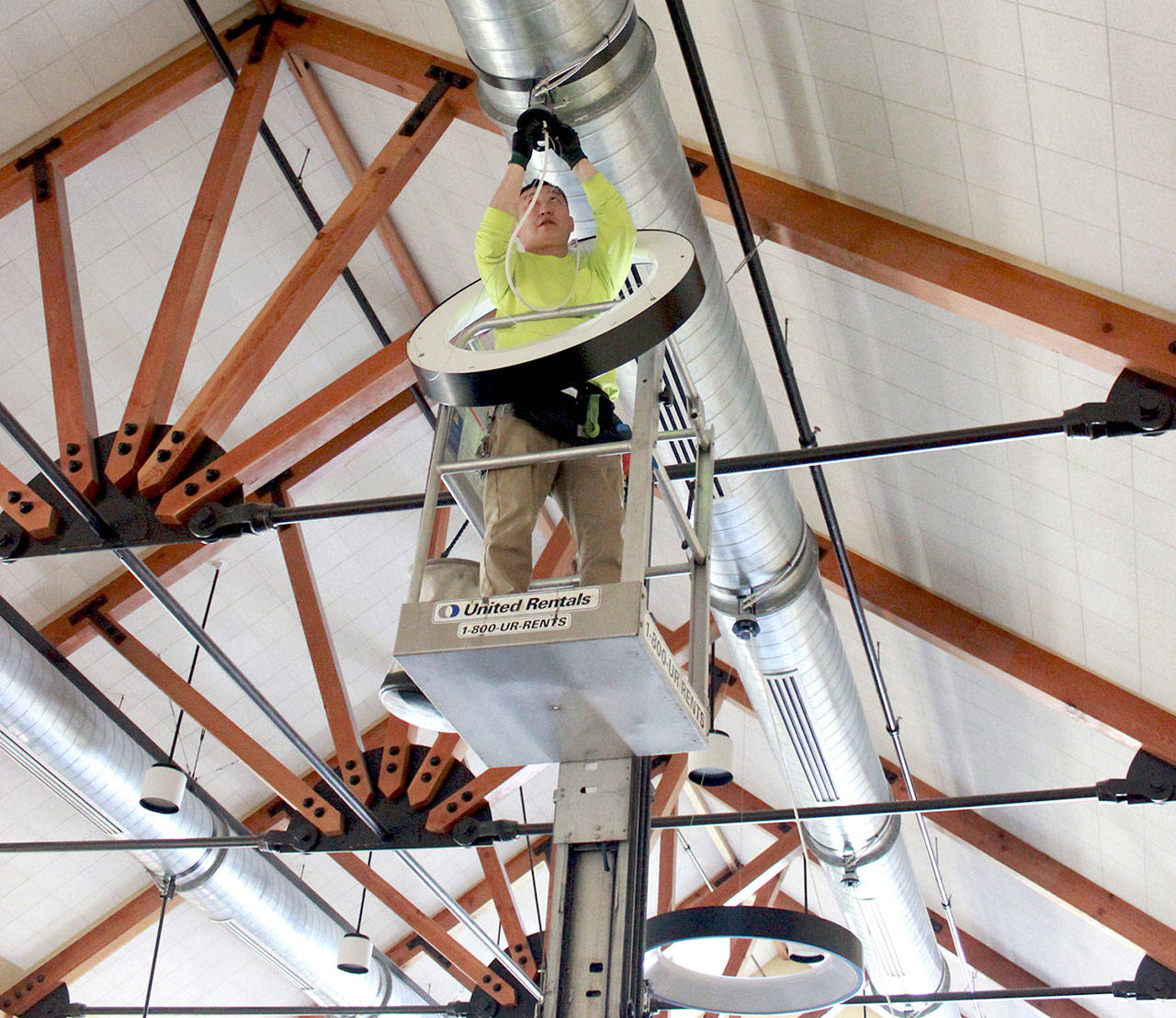PORT TOWNSEND — A $1.68 million investment in infrastructure upgrades at the historic Fort Worden is expected to keep more than 200 tons of carbon dioxide annually from entering the atmosphere.
The emission reduction is equivalent to removing about 43 automobiles from the roadway annually, said Megan Claflin, public relations officer for the Fort Worden Public Development Authority.
Installation of 144 solar panels, more than 5,054 energy efficient LED light bulbs, and a centralized energy management system will address energy consumption on the 95-acre Lifelong Learning Center campus, Claflin said.
“These capital improvements represent a significant step toward increasing Fort Worden’s independence from fossil fuels and reducing our carbon footprint,” said Dave Robison, PDA executive director.
Fort Worden was constructed in the early 1900s and is now a National Historic Landmark.
“As a historic facility, Fort Worden allows us to challenge the narrative that only new buildings can be energy efficient,” said Brian Maxwell, an energy engineer with University Mechanical Contractors, Inc. (UMC).
The solar photovoltaic system has been installed and is operating on the Nora Porter Commons Building roof, Claflin said.
It is is anticipated to save more than $4,000 per year over the next 10 years and estimated to generate 58,000 kilowatt hours annually — which is about enough electricity to power five or six average family homes annually, said Andy Cochran of Power Trip Energy.
About 40 of Fort Worden’s 73 historic buildings have updated lighting fixtures with LED light bulbs, Claflin said. Work, now in progress in the Commons and the McCurdy Pavilion, is expected to be complete by the end of the year.
The LED bulbs are expected to save 321,000 kilowatt hours annually, said Shane Pettit of Lumenal Lighting of Mountlake Terrace.
Where appropriate, such as with the automotive street lighting in the park, Dark Sky compliant fixture replacements were used, Claflin said.
Also, a new building control system is under development. Work is expected to be complete by the end of the year.
The system will allow staff to remotely monitor temperature and adjust heating set points in more than 40 guest accommodations and meeting spaces. They will preheat buildings only when guests are expected.
A highlight of the new building control system will be an “energy dashboard” which will be on display in the Commons Lobby, probably by the end of the year.
”Guests will be able to select various buildings from the Fort Worden inventory and learn more about the energy efficiency improvements in that specific facility, as well as learn more about the solar array on the Commons roof including a graph charting the kilowatts produced by the system,” Claflin said.
Carbon dioxide is a “greenhouse gas,” which has increased through human activities. Greenhouse gases trap heat in the atmosphere and are contributing to climate change, according to the federal Environmental Protection Agency.
Since May 2014, the PDA has managed all operations within the campus including facility use and capital improvements through a collaborative management agreement and 50-year master lease with the state Parks & Recreation Commission.
Funding
With grant funding from the state Department of Commerce’s Community Capital Facilities Program, including $308,000 for energy efficiency initiatives and $170,000 for the solar array, the PDA was able to secure a revenue bond through Kitsap Bank, Claflin said.
The project also earned $75,000 credit from the Jefferson County Public Utility District’s Conservation Rebate Program— the largest incentive to be offered in 2018, according to Resource Manager Bill Graham.
After staffing costs, utilities are Fort Worden’s largest operating expense, exceeding $500,000 a year, said Chief Financial Officer Diane Moody.
“The beauty of this investment is that the cost savings resulting from energy savings, will be utilized to pay back the bond,” Moody said.
“It is a tremendous opportunity for our organization to leverage both public and private support to help convert a historic Army post into a model for environmental stewardship.”
Energy audit
Between August 2014 and July 2015, UMC conducted an energy audit to categorize Fort Worden’s energy consumption — a combination of electricity, fuel oil, and propane — and establish a baseline for operations.
“Comparing this energy usage to similar facilities in the region, [UMC] determined that Fort Worden’s Energy Use Index could be significantly reduced,” Maxwell said.
Capital projects at Fort Worden must be evaluated by Washington State Parks and the National Park Service with references to the Secretary of the Interior’s Standards for the Treatment of Historic Properties to preserve the historic integrity of each building, Claflin said.
“The unique challenge we faced with this property is identifying and sourcing specific lighting, mechanical and electrical systems that fit within the confines of the historic parameters,” said C. V. Nguyen, a UMC project manager.
“It requires a bit of trial and error.”

